2020 has been such an intense ride for those who follow the stock market and even those who don’t. The stock market is usually in the headlines but it has been more and more present as the events of the COVID-19 Pandemic unfold. It can be hard to believe that there have been crazier times in history, ranging from recent to over a century in the past, and beyond. The earliest iteration of the stock market dates all the way back to the 1100s in France, though it wasn’t until 1611 when the first formal market was established in Amsterdam. Every major country in the world has a stock market.
[New to the stock market? Check out our article on how to start investing even with a modest budget.]
What we know as the stock market today is a far cry from a bunch of men standing in an open courtyard; however, it had beginnings that were just as humble. The New York Stock Exchange was founded in 1792 as a result of a document called the Buttonwood Agreement. It is known as one of the most important financial documents in American history, and it shifted the responsibility of exchanging securities away from auctioneers. From that document, the floor commission rate was established and kicked off the formal American securities trading that evolved into the stock exchange today.
The first trades to take place were primarily in governmental securities as well as stocks in the First Bank of the United States. Other shares that were among the first to be traded were also bank stocks. At that time, there were only two dozen stockbrokers and they operated out of the Tontine Coffee House. After the changes that took place in 1817, they formally became known as the New York Stock and Exchange Board and operated under that name until 1863.
From 24 stockbrokers chatting under a buttonwood tree, the New York Stock Exchange grew out of the busy coffee shops and office rentals along Wall Street and secured its permanent location on Broad Street in the year 1865. Continuous trading was introduced in the 1870s, which is also when the most well-known staple in trading history, the opening bell, was introduced. With the changes in technology and the economic power of the United States growing, the stock market was seeing over a million shares traded daily just two decades after settling in its present location.
Over the years, more rules and regulations were established and more brokers took to the floor. Today, there are roughly 2,800 companies that are listed in the New York Stock Exchange and around one and a half billion shares are traded each day.
The NYSE is now the largest stock exchange in the world. It was over a century ago that the value of the stock market hit an average daily trading volume of $1 million a day and now that value has soared up to almost $200 billion a day. The overall volume surpassed $20 trillion almost a decade ago. Throughout all of that growth, the stock market has had some wild moments throughout its history and we’ll be exploring fifty of those moments in this article. To make it simple, we’ve put them in order by year.

1918
1. The United States becomes the world’s largest creditor nation, due to the number of nations that became indebted to the US over the course of the first World War.
World War I began in 1914 and lasted four harrowing years until 1918. The United States was actually only involved in the war for 19 months and spent a great deal of money on it. Even though the war cost the US 52% of its GDP at the time, it still profited richly from the war itself. A recession that had been plaguing America came to a halt and an economic boom that lasted almost four years followed. This is because the US became the largest creditor nation during the war.
During the war, the United States lent out a total of $7 billion to multiple other nations including Britain, France, and Italy. It also did not take on any external debt to fund the war, nor did it cancel any debts accrued by other countries. Some sources say that as much as approximately $12 billion was borrowed.
[Want to take a deep educational dive into investing. Check out our list of the 25 Best Books About Investing.]
1929
2. Black Tuesday is one of the worst stock market crashes in history.
Black Tuesday is the nickname of the Wall Street Crash of 1929, which is still widely considered the worst day in the history of the New York Stock Exchange. The expansion following World War I propelled America through the Roaring ’20s and this date was what brought that to an abrupt halt and kicked off the Great Depression. The economy had been showing signs of slowing down throughout the middle of the year and after London’s top investor was jailed for fraud, the world spiraled into financial chaos.
Coupled with the fact that banks around the world raised their discount rates, the market became so volatile that it promptly crashed. On the fateful day of October 29th, the market fell a whopping 12%. Panic selling ensued, and the market lost as much as $30 billion in total value over the course of that Monday and Tuesday. The Great Depression lasted from then until early 1933.
3. Jesse Livermore became the first famous short seller.
Jesse Livermore is regarded as one of the greatest traders in history. He used his own system and traded entirely on his own, which is part of why he is still such a famous name on Wall Street to this day. He became the first famous short seller in history in 1929 when he saved himself from the Great Depression.
Short selling is the practice of borrowing stocks from a broker, selling those stocks on the market, buying them back, and then returning the stock to the broker. This strategy is employed when someone speculates that a stock is going to drop in price or that it is overvalued. It is a notoriously risky strategy but Jesse gained an impressive amount from taking that risk in 1929.
The few days leading up to Black Tuesday, he basically set up camp in his office making trades purely on a hunch. He ended up profiting $100 million while everyone around him lost nearly everything.
1955

4. Disneyland opens in Anaheim, California, causing a boost in the stocks of airliners, oil, and local business due to a sudden increase in tourists and travelers.
Disneyland opened in the middle of summer in 1955. July 17th was a Sunday and it was not a great day in the happiest place on Earth by any means. Several rides broke down and several other mishaps contributed to a very rough start for the park. That September, a hotel opened specifically for the park as well. Admission for adults was just $1 and The Hollywood Reporter published an article dubbing it an “amusement wonderland.”
Despite the rocky beginning, 31,000 guests hit the park on opening day and that number quickly rose. So many people began flocking to the park that it actually drove up stocks in a few industries including airlines and oil. Even the surrounding businesses got a huge boost because tourism in the area exploded after the park started to gain traction.
1956
5. During the Suez Crisis, Syrians sabotaged both the Trans-Arabian Pipeline and the Iraq–Baniyas pipeline, which cost the world an estimated $12 billion.
The Suez Crisis began in 1956 when Egypt’s president decided to nationalize the Suez Canal. The Suez Canal is a man-made waterway that was used to transport oil and while it was in Egypt, it was largely under British and French control. Israel felt that this move threatened their security and started talks with both France and Britain with plans to invade Egypt.
Israel successfully invaded. At the time, the world was watching all of these tensions unfold and Syria was one of the big players who stepped in. In retaliation, they destroyed both the Trans-Arabian Pipeline and the Kirkuk-Baniyas Pipeline, which were two extremely important ways that oil was moved. This was done to punish Iraq for supporting the invasion and to harm Britain’s ability to move the oil from Iraq.
The funds that were lost as well as those that were spent ended up costing the world roughly $12 billion and throwing off oil stocks for several years afterward.
1973
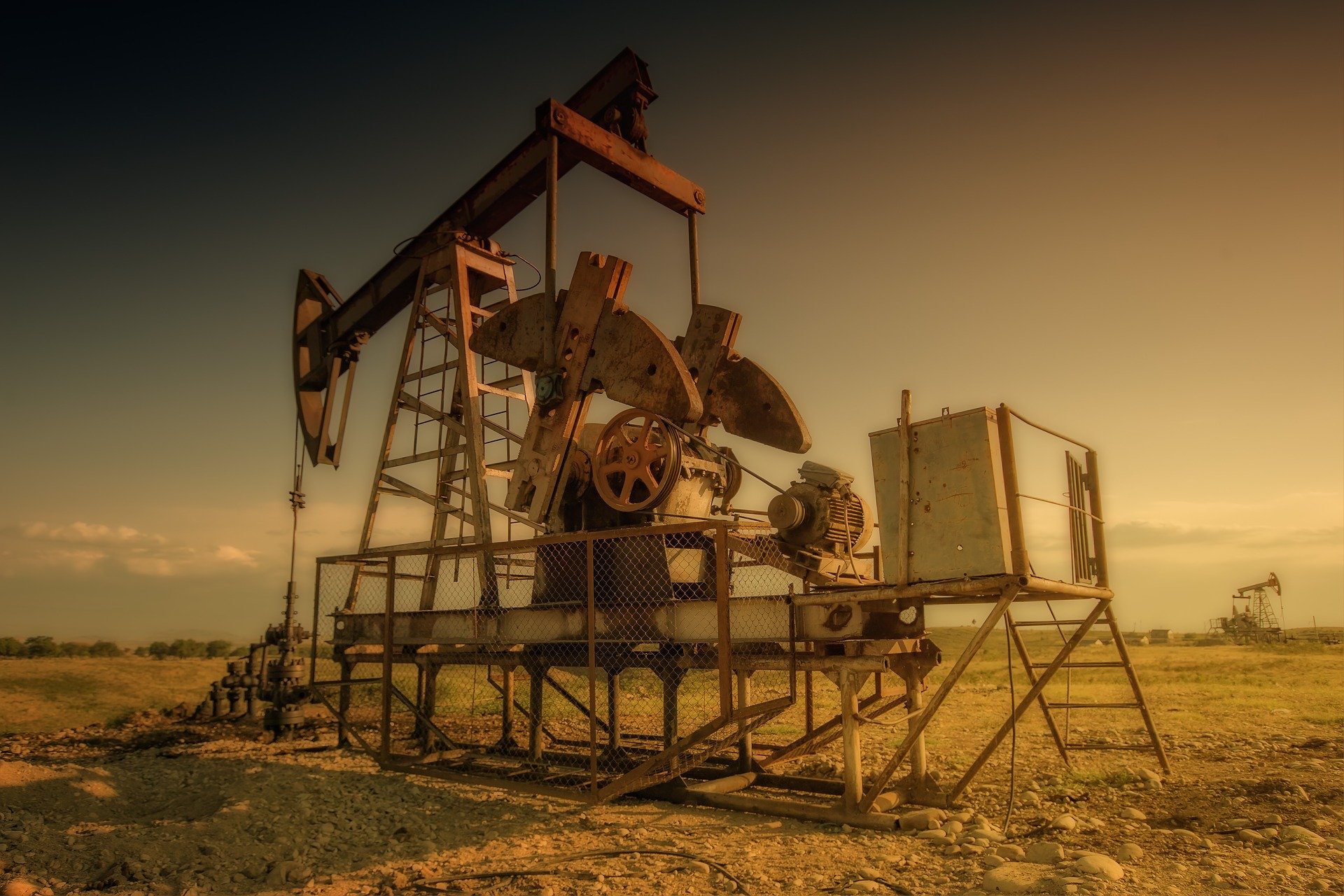
6. Members of the Organization of Petroleum Exporting Countries proclaimed an oil embargo, which was targeted at nations that they perceived as supporting the nation of Israel during the Yom Kippur War.
This event is also sometimes referred to just as the OPEC Oil Crisis. In 1973, the Arab members of the Organization of the Petroleum Exporting Countries sent the world spiraling with their decision to raise their oil prices by as much as 70%. They also agreed to reduce production and stop exporting to countries that were providing support to Israel during the Yom Kippur War.
This move cause oil prices to shoot up over $12 a barrel. Not only was oil drastically more expensive, but it was also much harder to come by. This caused an energy crisis as gas prices skyrocketed and share values plummeted. As a result of this move, NYSE’s share value decreased by close to $100 billion.
This kicked off one of the worst recessions in the world. Daylight saving measures, a national speed limit, and many other rules and regulations were implemented to help reduce America’s need for fuel.
1974
7. The oil embargo ends, with the price of oil having risen by nearly 400% during the period that the embargo was in effect.
The OPEC Oil Crisis abruptly ended in 1974 but the widespread economic devastation had already been done. Prior to the embargo, oil cost just $3 a barrel, but by March of 1974, it had risen 400% to $12 a barrel. Throughout the embargo, the panicked rationing of resources and extreme efforts to conserve energy had caused intense financial turmoil that echoed around the world.
The global economic recession continued after the embargo was lifted. US currency was devalued, stocks and bonds plummeted in value. Unemployment and inflation were both rising at the same time and quickly. The United States eventually recovered but a lot of the effects of this embargo are still felt today in the form of more energy-efficient cars, daylight savings time, and more effective home insulation.
1976
8. Ronald Wayne sold his stocks in Apple for just $800; they would be worth almost $100 billion today.
Ronald Wayne is one of the almost-forgotten co-founders of Apple Computer Company, which would eventually become the Apple Inc. that we know today. Less than two weeks after getting started, Ronald sold his shares in Apple for just $800. Almost anyone in the world would be elated to own 10% of what Apple became; however, Ronald was very concerned about accruing debt because of the loans that Steve Jobs took out.
Out of fear that the money wouldn’t be able to be recouped, he stepped away from Apple with an ultimate payout of just about $2,300 after everything was finalized. Apple was the first publicly traded American company to hit a market cap value of $1 trillion and the shares that Ronald gave up would be worth as much as $95 billion today.
To add insult to injury, he ended up selling off the original documents that tied him to the company as well, in the early ’90s. He took home $500 and the contract sold for about $1.6 million two decades later.
1979
9. OPEC raised the price of crude oil by 9%, from $13.34 to $14.55, taking advantage of the Three Mile Island nuclear disaster.
The Three Mile Island nuclear disaster took place in March of 1979 as a result of a cooling malfunction. It is noted as the worst nuclear malfunction in American history and caused a lot of turmoil after the fact. At that time, the US was trying to shift away from oil as a power source as it was still on the rebound from the crisis in 1973.
OPEC raised prices for crude oil by 9%. There were a lot of factors that contributed to this but it is easy to speculate that the shifting public opinion of nuclear power was much too easy to leverage. This caused one of the first hikes in the price of oil that would happen that year.
10. The second worldwide oil crisis occurred, due to decreased oil output in the aftermath of the Iranian Revolution.
Just five years after the first energy crisis had rocked the world, OPEC catapulted the world into more chaos. Oil output decreased less than 10% this time as a result of the Iranian Revolution but that didn’t stop OPEC. This price hike sent a barrel of crude oil from $15.85 all the way up to about $40, the highest price that the world had seen to date.
Inflation was at an all-time high and the increase in price caused widespread panic as people remembered the problems the country faced just six years prior. As a result of the prices raising more than double, OPEC’s market share met a sharp decline. Utility companies decided to start moving towards alternative energy sources as lines formed around the block at the gas stations once again.
1985
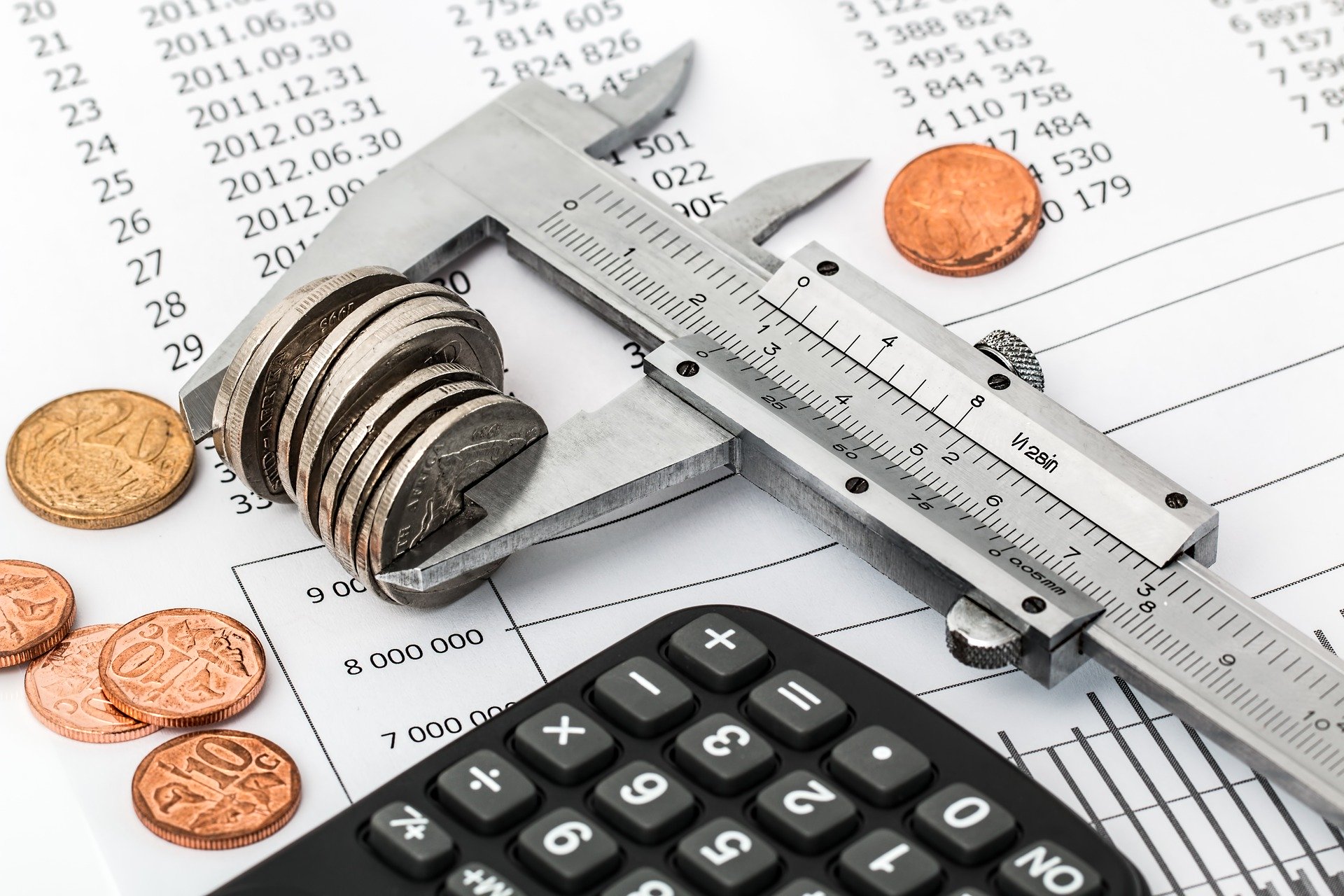
11. The United States goes from being the world’s largest creditor to being the world’s largest debtor.
The US spent several years as the largest creditor because of all of the debt that nations around the world accrued after World War I. The tables abruptly turned in 1985 when the US became the world’s largest debtor. The government reported that other countries owned roughly $108 billion more in America than America owned around the world.
Several factors lead to this rapid change including a surge in foreign stocks in the stock market. Overseas investors owned stocks that gained significant value, leading to America’s debt spiking as much as $30 billion in the first quarter. This was the first time in about 70 years that the US had been a debtor nation, with the last time being in 1914.
1987
12. Paul Tudor Jones predicted Black Monday and made an estimated $100 million.
Black Monday was a very sudden and severe stock market crash that took place in October of 1987. Markets fell as much as 20% in a single day. Paul Tudor Jones is credited as having one of the greatest trades in history because of the way that he predicted this very abrupt crash.
Throughout the year 1987, he spent hours studying the crashes of the past and used that information to pull off this absolutely historic trade. Just two weeks before the crash, he started aggressively selling off his stocks. Everyone else remained oblivious until the fateful day of October 19th when the Dow Jones dropped catastrophically. Paul Tudor Jones walked away with approximately $100 million.
13. Andy Krieger predicted that the Kiwi was overvalued and profited $300 million.
Another trade that is regarded as one of the best moments in trading history and landed Andy Krieger the title of “currency trading genius” took place that same year. After Black Monday, Andy Krieger started examining the currencies of the world. The US Dollar was struggling and he knew that it was just a matter of time before the wheels fell off another currency.
Everyone was rallying around other currencies because of the chaos happening with the dollar and Krieger knew that a smaller currency would quickly become overvalued. He used that prediction to short sell the New Zealand Kiwi; experts have predicted that he was dealing in amounts higher than what was in circulation in NZ at the time.
After all was said and done, he profited anywhere from $220 million to $300 million.
1990

14. The Tech Bubble began to grow.
In the ’90s, internet access became increasingly common around the world and that started a decade of speculation that would end up playing out very badly, eventually. Because of the expansion of the internet, there was a lot of market speculation that lead to reckless investing.
Everyone hopped on board the tech train, believing that the internet was the future of business. While that was ultimately true, the time for true digital businesses had yet to arrive and people were focusing heavily on the marketing and the current trends in the world rather than intelligently watching the market. This created what would come to be known as the tech bubble or the Dotcom bubble.
1992
15. George Soros became a billionaire by shorting the British Pound.
George Soros is nearly a household name in America because of his wealth. He is a billionaire investor who currently has a net worth of $8.6 billion. He is also one of the most famous currency traders in the world along with Andy Krieger that you read about earlier. Many people know that he is a billionaire but they are unaware of what propelled him to billions back in 1992.
In an event that has come to be known as Black Wednesday, Britain was forced to pull the Pound from the ERM. Speculators saw the way that low interest rates and high inflation were steering the pound towards trouble so they began shorting it to make a profit. George Soros bet big when it came to Black Wednesday and took home a cool $1 billion on the deal. This is what put him down in the history books as one of the greatest currency speculators of all time.
1993
16. Louis V. Gerstner Jr. replaces IBM Chairman and CEO John F. Akers, and begins to employ an aggressive campaign to slash costs by more than $8 billion, causing many companies worldwide to adopt more aggressive cost-cutting measures.
In the early ’90s, the computer company IBM was going through an extremely rough patch; its losses increased year over year until 1993 when the total had surpassed $8 billion. The value of the stock had been cut in half. That’s when Louis Gerstner entered the picture. He had a history of turning company’s around and IBM approached him a total of three times before he took the position.
Gerstner turned the company around on an impressive scale. He was able to cut costs by over $6 billion, expanded advertising, and pushed IBM towards a profit of over $3 billion after it had spent years in the red. By year number four, Gerstner’s efforts had culminated in the quadrupling of the shares’ value. Many other companies started to emulate his methods to try and match his success.
1994
17. Thelma Howard, Walt Disney’s housekeeper, had amassed almost $10 million in wealth after Disney gifted her stock in the company for Christmas each year.
Walt Disney and his family lived comfortably in the Holmby Hills neighborhood of Los Angeles for several decades, thanks in part to the efforts of their cook and housekeeper, Ms. Thelma Pearl Howard. She was a stenographer by trade but moved to California when she was 17 and started taking up cleaning jobs. She worked for Walt Disney and his family from the years 1951 to 1981.
Each year, Walt Disney gifted Thelma with stock for Christmas. She didn’t grow up with wealth and had sort of a tragic upbringing but Walt always referred to her as “the real-life Mary Poppins.” He said that she brought the house to life. In 1994 when Thelma’s life came to an end, she had a fortune of about $9.5 million because of all the stocks she was given.
Her family never knew about her wealth until she passed away. In her will, she split the money amongst her family and created the Thelma Pearl Howard Foundation to help provide art education to underprivileged children.
1997
18. Steve Jobs sold 1.5 million shares when Gil Amelio was CEO, causing a 12 year low.
Steve Jobs made headlines throughout his life; however, in the late summer of 1997, the finance world was abuzz with the latest on Jobs and it ended up plunging the stock market into turmoil. When a man named Gil Amelio was CEO, Jobs disclosed that he had lost faith in the company which prompted him to offload a whopping 1.5 million shares in the company. While it’s all water under the bridge, he profited $22 million on what is now worth close to $5 billion.
It is unclear if what unfolded over the next decade was all part of the plan or just a happy accident but the widespread reports of a “private party” dumping so much Apple stock caused the company’s stock prices to hit a 12-year low. He wasn’t part of the company at the time of selling them off but he returned shortly after when Amelio brought him back, and the drastic drop in stock prices eventually forced Amelio to resign.
1999
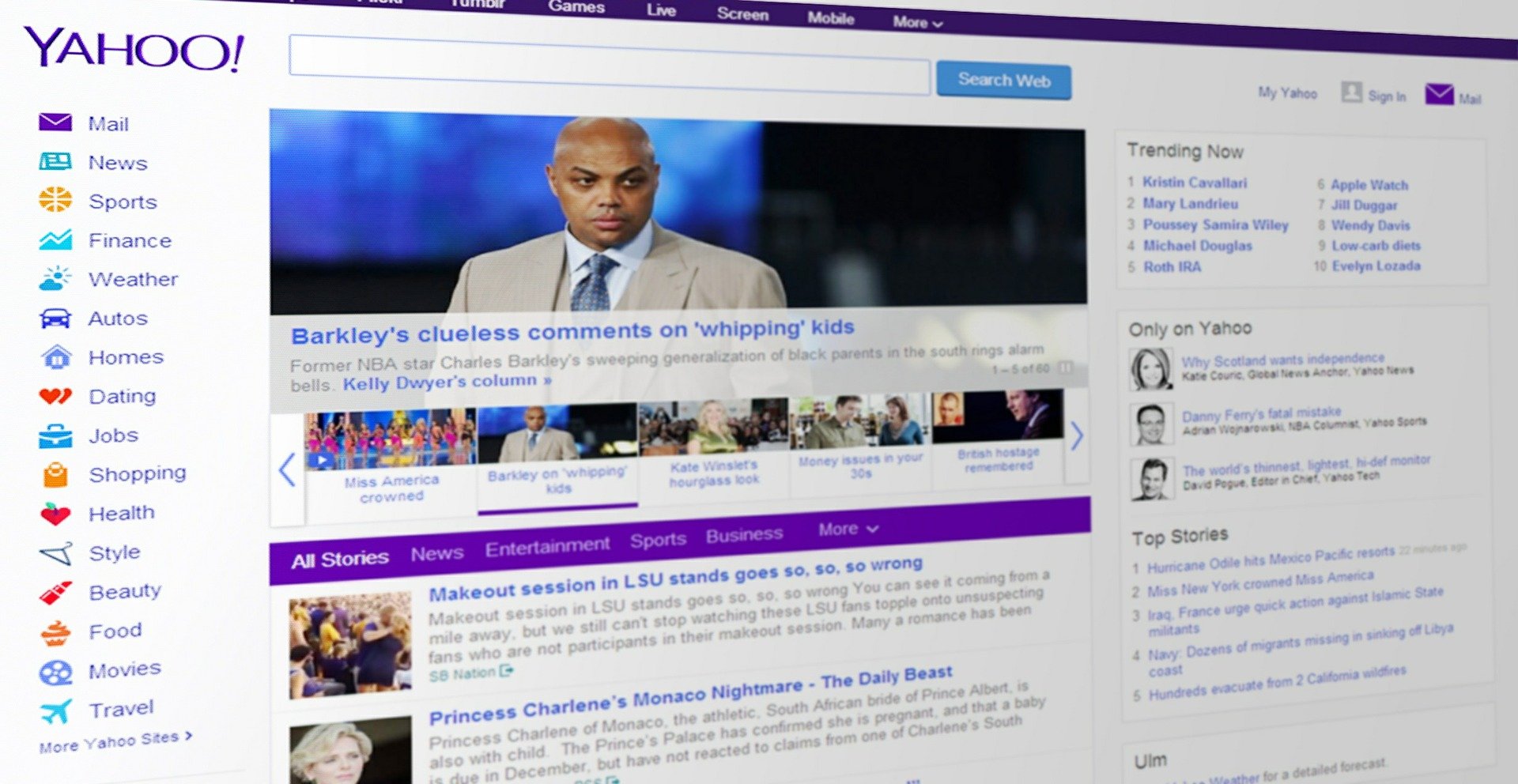
19. A 15-year-old recommended stocks on Yahoo Finance and caused complete chaos in the market for as much as a year. He profited $285K but was eventually charged with fraud and forced to return the money.
Throughout the year 1999, Jonathan Lebed had a very interesting hobby. At the time, he was 15 years old and when he was finished with his homework, he would troll finance forums online and make stock recommendations. Many of the companies he was recommending had small average daily trading volumes that camped out around $60,000 but, whenever he would recommend them, that volume could reach up over a million.
For several months, he caused utter chaos in the stock market with his aliases and multiple recommendations. On his worst day, Lebed profited $12,000. He was the first minor in history to get charged with stock-market fraud. He ended up being forced to repay all of the money he made illegally plus interest, which came out to $285,000.
2000
20. Large companies with stocks in tech began to sell off a majority of those stocks, causing a panic which led to a 10% drop in the market in just a few weeks.
Ten years after the rush to buy stocks in tech companies, investors started to wise up to the fact that not every company with a shiny dot com on the end was going to be a success. Unfortunately, some of them were destined to go off the rails. As that became more apparent, large companies began to jump ship before anyone else. They started selling off a majority of their stocks in tech companies.
As the stocks began to move, people started to panic. The tech bubble sometimes referred to as the “dotcom bubble” promptly burst in the year 2000 because people started to realize that investing in the next big thing isn’t always the best course of action. It’s important to pay attention to companies at a deeper level before sinking your money into it. Due to the panic, there was a stark 10% drop in the market over the course of just a few weeks.
2001
21. Most new emerging tech companies closed due to no longer being propped up by investor money, which caused hundreds of millions of dollars of investor money to drop to $0.
Investor money was the lifeblood of tech companies throughout the late ’90s as all of the investors had rushed to get their hands on some of what they thought was the future of the financial world. There were even companies that had great marketing but lacked great substance that had pulled in astronomical amounts of investor money, and 2001 was the year that saw them all fall.
Hundreds of millions of dollars went towards inflating the dotcom bubble. The Nasdaq index was less than 1000 in the mid-90s and it had ballooned up to over 5000 by the year 2000. The apparent boom was sparked by investing in fad companies and young companies that weren’t going anywhere. All of that money was lost when the bubble burst and by the end of 2001, even large and reputable tech companies that were doing well saw a drop in value of over 80%.
The younger companies that didn’t have anything but investor money just disappeared.

22. Due to the 9/11 terrorist attacks, the New York Stock Exchange (NYSE) and the Nasdaq did not open for trading on that Tuesday morning, in order to prevent a stock market crisis.
After the tragic attacks on the World Trade Center, the NYSE and the Nasdaq delayed their opening. The first plane hit the North Tower just before 9 in the morning and the markets were put on pause. The original plan was to delay opening to help prevent a complete crisis in the stock market as the attack threw the world into a brand new and deeply uncertain chapter. When the South Tower was hit shortly after, plans changed.
The market did not open for trading on September 11th of 2001. This was mostly because of the location of the attack along with the unknown origin. The last time that the stock market had been closed on what was supposed to be a trading day was all the way back in 1969 when Apollo 11 landed on the moon.
23. After 9/11 the stock market was closed for four sessions, the longest period of time since 1933.
After the attacks on the World Trade Center, it was four long days before the stock market would reopen. This was just the first step on the spiraling stairway of economic fallout from the attacks. This was the longest that the market had been closed in almost 70 years, surpassing the previous record of two days.
The closure took place, in part, because of the proximity of Wall Street to the location of the attacks but the key factor that kept the stock market closed over the next few days was the impending panic. Experts believed that the market would be extremely volatile and that several stocks would tank as everyone panicked and tried to cash out before anything could get any worse. This, of course, was only exacerbated by the fact that America was already in a recession.
24. The first week of trading following the 9/11 attacks witnessed the S&P 500 fall by more than 14%, which was a record one-day drop at that time.
As predicted, the stock market took a hard turn as soon as it opened back up. Trading opened back up on September 17th of 2001 and the Dow fell over 7% right away. To look at the numbers another way, that amounted to a drop of about 685 points. It was the largest one-day drop in history at the time. The shutdown itself cost over a billion dollars and that was truly just the beginning.
Following the reopening of the stock market, the recession deepened. The airline industry lost a total of $5 billion, oil prices fell back below $20 in a matter of months. Even though the recession officially ended in November of that year, Dow continued to fall and many industries continued to struggle for a while afterward.
25. Jim Chanos shorted Enron when it was doing well and saved himself from the fallout of the company’s bankruptcy.
Jim Chanos is another man who tops the list of famous short-sellers. He is often referred to as “the catastrophe capitalist.” What propelled him to popularity was his biggest win throughout his career as a short seller. An energy company, Enron, was outwardly successful but when Chanos looked deeper, he noticed some problems.
To add fuel to the fire, the CEO of Enron stepped down and that’s when Chanos knew that he had to act. He initiated a short in November of 2000 and then watched the company completely disintegrate under the pressure of financial fraud. So many people lost out in Enron’s collapse and Chanos got to watch it all unfold while sitting on his $500 million in profits.
26. Lou Pai also sold his Enron stock just before the collapse, netting him $270 million.
Enron’s collapse was wrought with scandals and Lou Pai was one of the people who was at the center of that. He was a former executive and has come to be known as the invisible CEO. This is because he was never prosecuted during the fraud trial that took place following Enron going under. Some people spent time wondering if he ever existed while others regarded him as one of the biggest thinkers in the business.
Just over a year before Enron fell apart, he sold off more than 300,000 shares in the business. Because he was able to jump ship so early, he shielded himself from the impending charges of insider trading that were levied against other corporate-level colleagues of his. At the end of the day, Pai was able to walk away with at least $270 million (though some speculate it was closer to $300 million), and cash it in on a brand new wife and a secluded plot of land in Colorado.
2005
27. Mizuho Securities accidentally sold shares for 1 yen each because of a typo.
Mizuho Securities is an investment banking and securities firm based in Japan. This mishap didn’t take place on the American stock market but it is such an incredibly crazy moment that there was no way that it could be left out. Mizuho put shares of a recruitment company known as J-Com on the market in 2005. At the time of listing, the company meant to list just one share for 610,000 yen (which was equivalent to just over $5,000).
Unfortunately, what the listing actually was published as was completely disastrous. Because of a typo, 610,000 shares of J-Com were listed for just one yen apiece or roughly a penny. This was the public debut of J-Com and even though there weren’t even that number of shares to be listed, it was processed through the Tokyo Stock Exchange without event. What’s more, the TSE refused to cancel the transaction despite Mizuho’s multiple attempts. It is estimated that over $200 million was lost due to the error.
2008

28. China becomes the largest foreign holder of United States debt, surpassing Japan, who had previously held that title.
Before the year 2008, Japan was the largest foreign holder of America’s debt. China rose up to claim the title in August after purchasing a significant portion of the existing US Treasury debt. The dismal recession of 2008 forced America to borrow from other countries in order to stay afloat. China’s economy was steadily growing and they ended up acquiring as much as 20% of all US debt that existed at the time.
By 2009, reports were rolling out that China had purchased as much as $1 trillion in US debt. It was also reported that China spent over 14% of its economic output on the accumulation fo foreign debt and the majority of what they purchased was American.
29. The housing market crash occurred.
One thing that has become clear over the history of the stock market is that bubbles are bound to burst eventually. The real estate bubble slowly inflated from the late ’90s onward as the Federal National Mortgage Association charged full speed ahead towards its goal of making home loans more accessible to high-risk borrowers. This drove up the prices of homes and created an environment where plenty of people were able to secure loans that they couldn’t realistically afford.
Once home prices reached a certain point, there was no way that borrowers could secure such significant amounts of money and investors weren’t as willing to take the risk anymore. It suddenly became clear that housing prices were going to have to drop and the panic selling began. With everyone offloading their securities that were backed by mortgages and home prices plummeting, interest rates on subprime mortgages were increasing. Because of the spike in interest rates, millions of homes were foreclosed on as well.
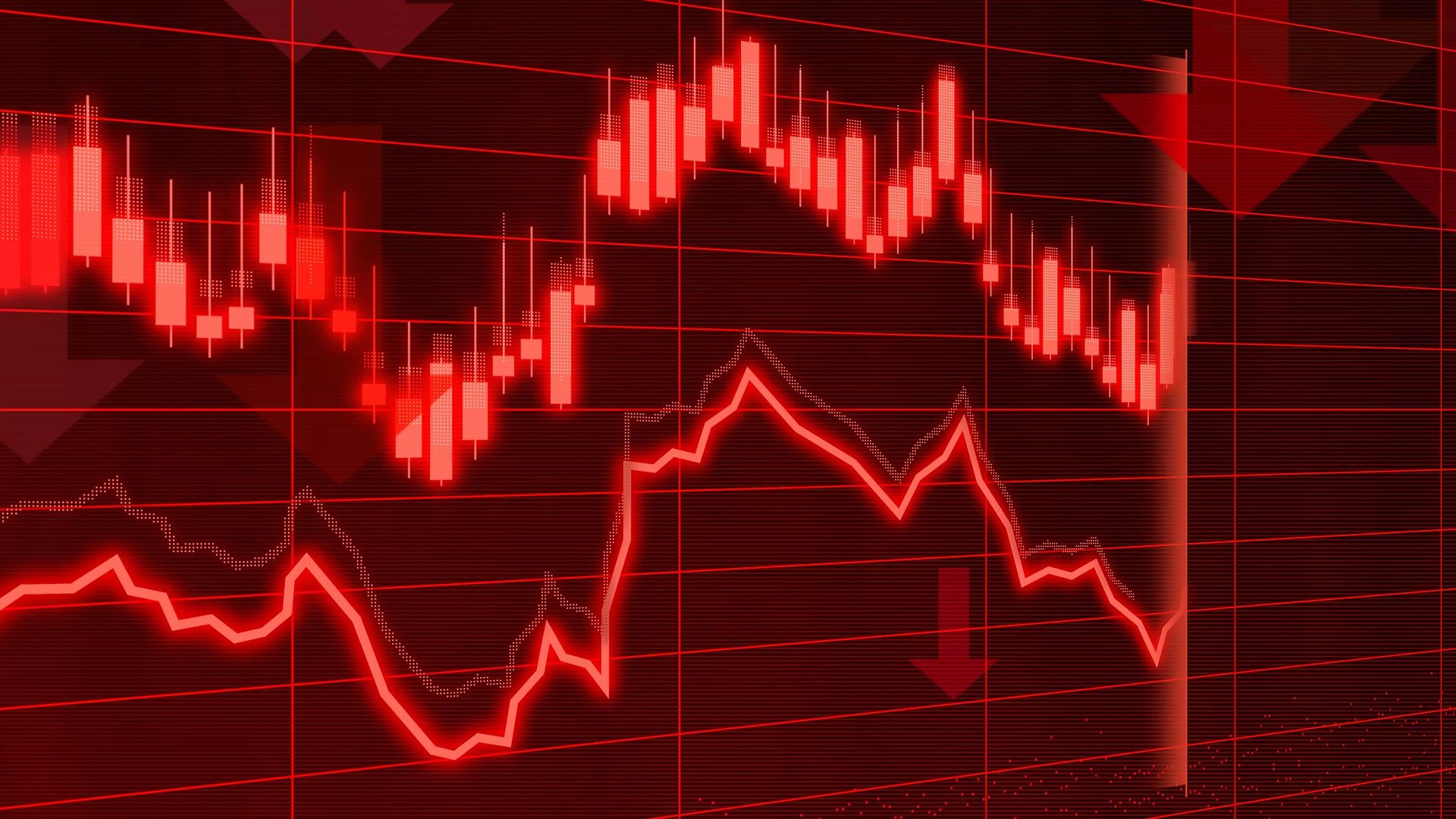
30. The Dow Jones Industrial Average had its largest drop in history.
The housing bubble wrecked the economy when it finally burst and caused a financial crisis that spanned the globe. The day the crash is considered to have officially begun was September 29th of 2008, when the Dow Jones Industrial Average had its largest drop in history. It plummeted more than 777 points.
The housing bubble created an environment where banks, brokerages, and insurance companies were steadily going under, requiring bailouts from the government. The constant instability was detrimental to the stock market as investors continued to lose confidence. Bailouts were the only thing that gave investors any hope and when Congress failed to pass a critical bailout in September, the Dow took its biggest nosedive ever reported. Even though Congress went on to pass it a month later, the global market was already suffering.
31. Close to $11 trillion in personal wealth was lost in the crash of 2008.
After the housing bubble burst, close to 20% of homeowners were suddenly underwater on their mortgage. This means that they owed more than their homes were worth. According to one report, homeowners lost a total of $3.3 trillion in home equity alone that year.
Because of the stock market being in complete disrepair that year, shareholder wealth also tanked. As much as $6.9 trillion in wealth was lost. When you add all of the figures together to total what was lost that year, it came close to $11 trillion. A sobering thought is that the entire US Treasury debt in 2008 was almost equivalent to what was lost that year. Another way to look at it is that 20% of the global GDP was lost in the personal wealth of Americans alone as a result of the financial crisis.
32. John Paulson predicted the housing market crash and profited between $3-4 billion.
John Paulson is someone whose name you may have never heard but those who are well-versed in stock market history count his name among some of the other largest traders in history like Warren Buffet and George Soros. He also narrowly escaped the tailspin everyone else went through during the crash.
He felt nervous about the way that subprime mortgages were looking as far back as 2005 and he began to speculate that the crash was impending. After that, he got to work. In betting against subprime mortgages, he ended up saving himself from the crash and turning a profit of several billion dollars.
2009
33. Bank of America quadrupled despite the financial crisis when it appeared the global financial system was on the verge of collapsing.
Coming out of the crash of 2008, it was highly expected that big banks were going to suffer through 2009 as well. Bank of America was one of the biggest shocks in 2009 when it turned out that they weren’t tanking at all. Instead, they were actually seeing their profits rise in the first half of the year. The situation wasn’t perfect but it was going better than expected.
Bank of America exceeded its target for the price of shares in the first half of 2009, although it was by just a couple cents. Over the course of the year, the bank continued to do well even though the global financial situation was incredibly precarious. Deposits were even up in 2009, as much as 26% for retail deposits from the year prior. Individual deposits rose by over 5%. From March of 2009 to July of 2009, the value of BoA shares quadrupled.
34. GM received a bailout after declaring bankruptcy and did not compensate its old shareholders.
In the automotive industry, three companies stand out at the top and were known as “the big three” back in 2009. These are GM, Chrysler, and Ford. Because of the crash of 2008, the government extended a massive bailout to General Motors in 2009. From December of 2008 to May of 2009, GM was given several loans that added up to a staggering $19.4 billion. Just a month after their final financial boost was received, GM filed for bankruptcy.
As part of their bankruptcy, they ended up receiving an additional $30.1 billion. The only problem is that GM failed to compensate the majority of their shareholders and even the government lost out with providing them relief. GM ended up costing taxpayers over $11.2 billion and was in the black for over $20 billion only five years on from reorganizing under bankruptcy.
2012
35. DI Corporation’s shares surged over 800% because of Psy, the musician.
In 2012, Gangnam Style was omnipresent. The catchy tune was created by the Korean rapper Psy and it went absolutely viral over the course of summer 2012. The song became one of the most viewed videos in YouTube history. Apart from having everyone doing that dance, the song’s popularity had another effect.
Psy’s father, a man named Park Won-Ho was the chairman and controlling shareholder of a semiconductor company called DI Corporation. After Psy became a global sensation, the value of DI Corporation’s shares started surging. Psy’s popularity brought a lot of attention to his father’s company, greatly increasing the demand for shares and, in turn, the value of those shares.
36. Zynga, the game company, fell more than 40% in one day.
Global economic conditions were already a little bit rocky in 2012, so when tech companies started to falter, some weaker ones just didn’t make it out unscathed. Zynga, the online gaming company, is one of them. They were most popular for games on Facebook and mobile platforms like Draw Something. In the second quarter, Zynga reported a quarterly loss of $23 million.
Although companies have had bigger losses, this was enough to plummet Zynga’s stock down by 40%. The company’s shares had opened at $11 each and had dropped all the way to $3 by mid-2012. Part of Zynga’s downfall could be attributed to the fact that Facebook, the main platform for their media, was trying to create distance between the two companies.
2014
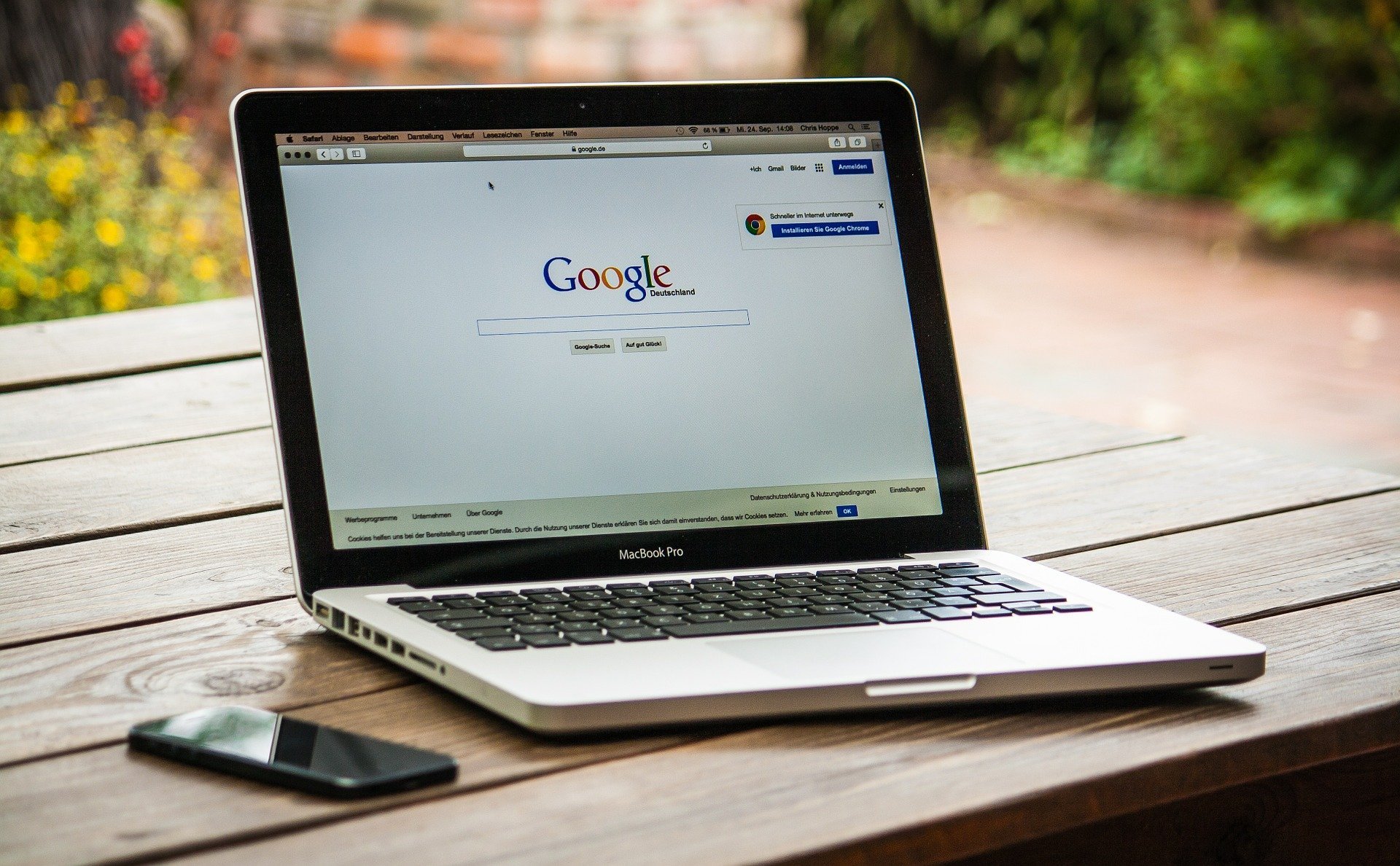
37. Google acquired Nest and shares went up 1900%… for the wrong company.
Smart home products are so common now that it is strange to look back just six years ago to when this acquisition happened and think about the fact that Nest Labs was truly a pioneer. Nest Labs is a company that was founded in 2010 and made things like smart thermostats, CO detectors, and more. In 2014, Google made a big move and acquired Nest Labs for the hefty price tag of $3.2 billion.
It is no surprise that Google’s acquisition got people interested in purchasing stock in Nest Labs; however, there was a mistake. Nestor was a shell company that traded under the symbol NEST. After Google’s acquisition, the completely unrelated company saw shares jump as much as 1,900% from buyers who weren’t paying enough attention.
2015
38. Google had the largest surge in history, gaining $52 billion.
Google is a massive tech company and by now, they have a worldwide reputation of breaking records and raking in tons of investments. After Google reported its second-quarter earnings in the year 2015, it did just that. This time, though, it was on a larger scale than ever before. Google shares surged when the trading day opened after its earnings report was published.
Google exceeded projections and ended up securing an additional $52 billion in market capitalization. This was the largest gain, historically, in a single day. In fact, the tech giant beat their own record that was set in April of 2012. The previous record single-day gain was just over $46 billion.
2016

39. The release of Pokemon Go pushed Nintendo shares up by more than 30%.
Pokemon Go was the hottest thing out there in 2016. It broke records on day one by surpassing 130 million downloads right out of the gate. It surpassed the other three leading apps in terms of downloads and the average time that the app was used per day was almost 45 minutes. Pokemon Go was popular.
Because of its popularity, it did great things for Nintendo in the stock market. Within a week of the game’s launch, Nintendo’s shares were up as much as 33%. Even though the game was developed by Niantic, Nintendo is still up even after a quick dip when it pointed out that fact. Since the game’s launch, Nintendo shares are up 200%.
2017
40. Long Island Iced Tea changed its name to Long Blockchain and went up by 289%.
Long Island Iced Tea is a New York-based beverage company that wanted to get in on the ground floor when it came to blockchain because that is where the money was at back in 2017. In a bold move, the company changed its name to Long Blockchain Corp. and made an announcement that it was shifting its primary focus. Of course, they weren’t going to stop making beverages, though.
Everyone watching was concerned that this was going to be a classic case of pump and dump fraud but that didn’t stop the company’s stocks from jumping up almost 300%. Long Island Iced Tea wanted to profit on the buzzword of the minute and that seemed to fall apart quickly as the cryptocurrency fad faded out. In fact, the FBI has gotten involved to determine if anything shady was going on that precipitated such a drastic move. Nasdaq has declined to list the beverage business until further notice.
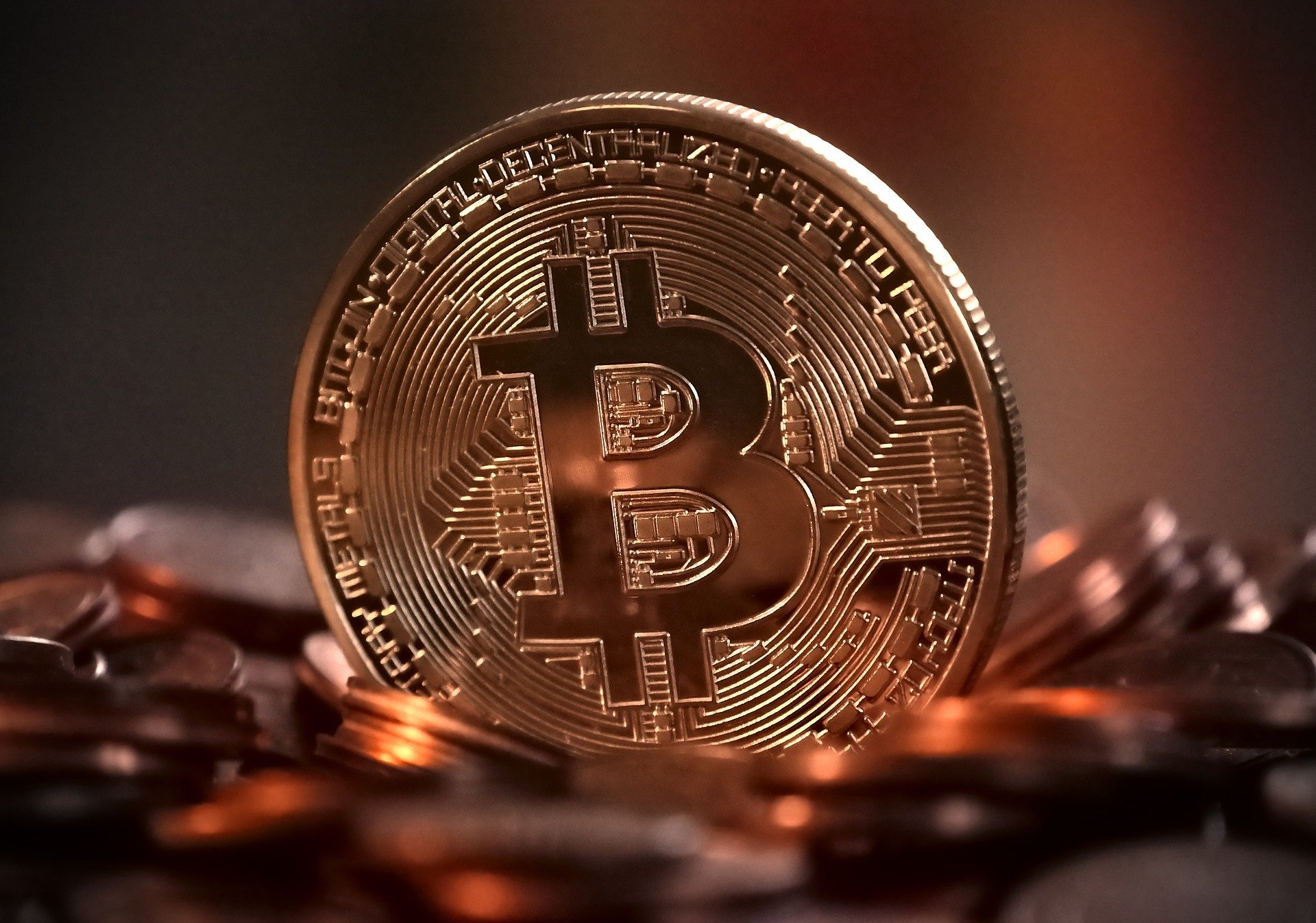
41. Bitcoin was valued at $20K at its peak but dropped to just $3K in little more than a year.
Whether it was market manipulation or pure luck, Bitcoin skyrocketed back in 2017. In the middle of 2017, one BTC was worth roughly $20,000. Research later showed that just one trader was in charge of pushing the price up so high. It created a trend surrounding the idea of cryptocurrencies and a plethora of them hit the market.
As you read above, some companies were trying to shift their focus to help them capitalize on the crypto wave. People were in a rush to buy some bitcoin, everyone was talking about it. Some people even went as far as speculating that it could become a global currency. However, within just a year, the value of a single bitcoin had dropped to about $3,000. It still continues to fluctuate and sits at $11,091.40 at the time of writing.
2019
42. In January, the Yen inexplicably shot up by 3%.
In the first few days of 2019, something very peculiar was happening with the Japanese yen. It has come to be known as a “flash crash.” Seemingly out of nowhere, the yen rose 3% against the dollar in a matter of minutes. This type of rapid change is so uncharacteristic that the shift was described as violent.
It left a lot of people involved in the currencies market absolutely bewildered. People speculated about causes for quite a while after it happened. Theories ranged from a warning from Apple to the depletion of human trading, all the way to the fact that it was the so-called witching hour in trading. It was also said that such a drastic flash crash happening on the first official trading day of 2019 was a bad omen.
43. Saudi Aramco garnered a record demand of $100 billion.
Saudi Aramco is the state-owned oil company of Saudi Arabia. In the middle of 2019, the company started working on plans to go public. A stall in the IPO held things off when the plans originally started in 2018; however, there was no stall in the demand.
It was unclear how many shares that Saudi Aramco was going to put on the market in 2019, but investors were flocking to the company. Many lenders were eager to get their hands on some of the shares and the overall demand was an incredible $100 billion in total.
44. Saudi Aramco was the most profitable company to ever go public.
Based on the demand alone, it is absolutely no surprise that Saudi Aramco became the most profitable company to ever go public when it finally did so. The company was estimated to be worth about $1.2 trillion prior to going public on the Riyadh Stock Exchange. Riyadh placed an even higher value on the company, estimating it at $2 trillion.
In fact, the slightly inflated valuation is one of the things that hindered the company from going public in the past. It has been in operation since 1933 and was a company that kept most of its dealings under wraps until it started to prepare to go public. It started publishing revenue reports along with other financial information to help support its incredibly high valuation.
Leading up to its IPO, Saud Aramco reported a six-month profit of about $47 billion for the first half of 2019. At that time, Apple had only reported a net profit of just under $22 billion and it was considered the largest company in the world by value. Saudi Aramco, regardless of its true value, is the most profitable company in the world to ever go public.
45. Saudi Aramco also landed the world’s biggest IPO that December, driving stocks up 10%.
In December of 2019, all of the building blocks were finally in place and it was time for Saudi Aramco’s IPO. As expected, it was one that broke world records. At the beginning of trading, it was valued short of its original target and came in at $1.7 trillion. Even though it missed its mark, the initial public offering of the oil company was the largest in history.
Shares were valued at $8.53 on the first trading day and the company was able to amass a total of almost $26 billion in the first day of its share sale. At this time, it remains to be seen what will happen with foreign investors but the amount of money the company has already raised is nothing to shake your head at. After the groundbreaking IPO, company shares went up 10% in value over the course of just one day.
2020

46. The COVID-19 outbreak has created an incredibly volatile market.
Ever since the beginning of the global pandemic, the market has been extremely volatile. Fluctuations in the media coverage, case numbers, and predictions made it hard to determine what was coming next in the earlier stages. Because of that, the economic outlook is still considered to be uncertain.
Some reports state that the beginning of the outbreak saw stocks changing an average of 117% in value. Many people are panicking and selling all of their stocks while others are sitting back and waiting. This is a very hectic time for every nation and the lack of a general consensus on what lies ahead means that the market could take a long time to even back out.
47. Oil had its worst month since 1983.
March of 2020 was when the Corona Virus started to truly rear its ugly head and a lot of industries were rattled as a result. One of the most heavily affected was oil, with prices crashing as much as 54%. It was the worst month that oil had seen since the year 1983 when it started trading.
The supply was steadily growing when we were all faced with a world full of travel restrictions and all-out bans. Everyone was forced to freeze in place while the first wave of the virus rocked the world, pushing the demand for oil to rock bottom. Gas prices hit record lows in March and even several months later, a gallon of gas is still under $2 in most of the country.
48. Oil dropped below $0 a barrel for a short time.
Another unexpected result of the pandemic was the fact that oil prices went negative for the first time in history. Major economies and almost all travel were brought to an abrupt halt at the end of 2019 through the first quarter of 2020. Because of that, the demand for oil dropped to an all-time low.
Because there was virtually no demand, oil was so widely oversupplied that it became briefly worth absolutely nothing. Due to the oversupply of oil, producers were forced to pay buyers to take their stock off their hands because they were running out of places to put it. The value didn’t stay so low for long, but it drove down gas prices and wrought some havoc on the market before it cleared up.
49. The Dow dropped over 2,000 points in a single day.
The first week of March was one of the ugliest that the stock market had seen in well over a decade. The crash in 2008 was staggering but in the first week of March, the Dow Jones Industrial Average dropped a total of 2,013 points in a single day. This was more than double the previous record of 777 in a single day. After the drop, it ended the day at 23,851.02; this was the worst day it has had since October 15th of 2008 when it dropped 7.87%.
This 2000-point drop was just 7.79% but it was still quite devastating. The decline was so sharp that trading had to be briefly halted to help curb the influx of panic selling.

50. Tesla’s stock plunged more than 11% after a tweet from CEO Elon Musk.
Elon Musk is the outspoken CEO of Tesla and he has been known to get himself into hot water with his words and his behavior. This was just another one of those times; however, the consequences were a little bit more real. Back in May, Tesla, Inc. saw its shares drop as much as 13% after Elon went on a short-lived rant and included his thoughts that the price of the shares was “too high.”
As usual, many analysts were quick to say that these comments were tongue-in-cheek or just typical behavior of Elon; however, the CEO contacted the Wall Street Journal directly to reiterate that he was serious in his tweets. Thankfully, this series of tweets didn’t land him a lawsuit.
***
Curious about investing but not sure where to start? Check out our guide to investing for beginners.
